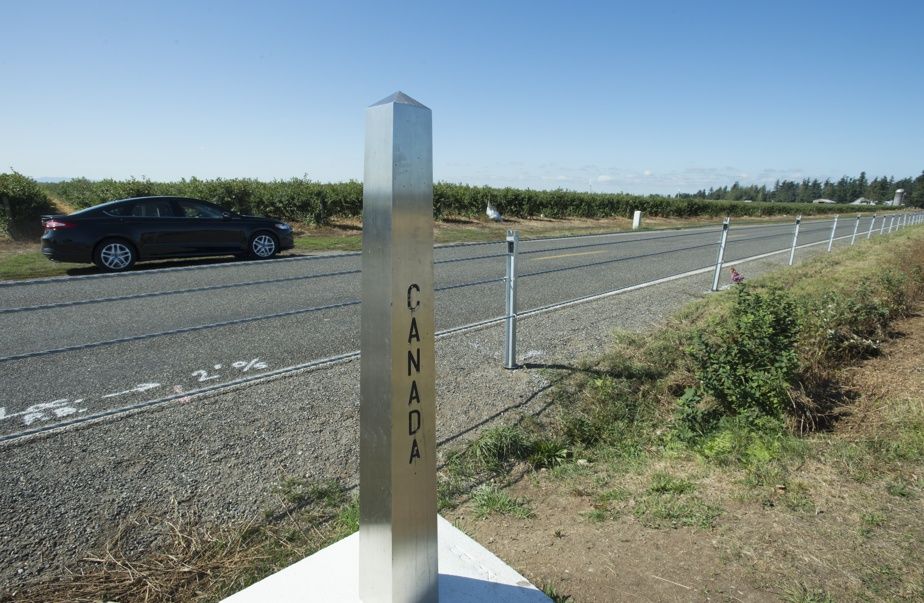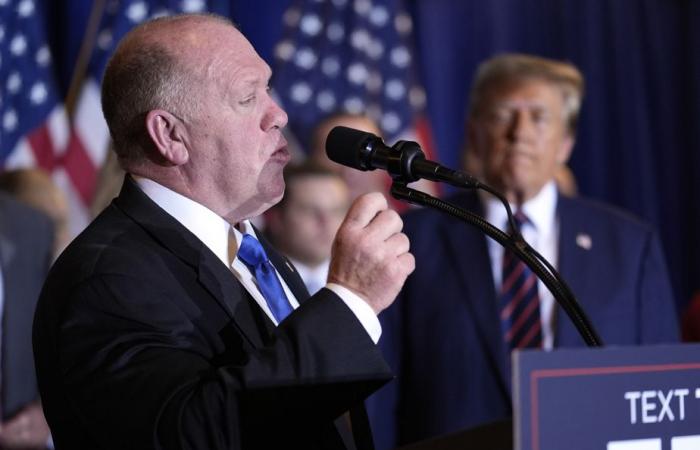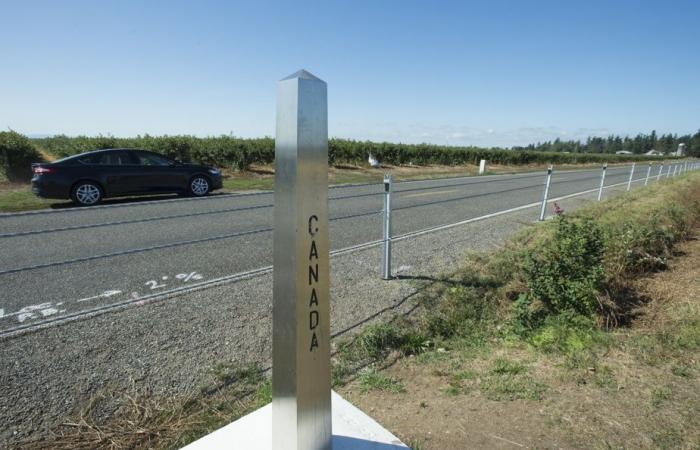At the end of June 2018, during Donald Trump’s first administration, Tom Homan, whom the president-elect had just named “border czar”, threw in the towel overnight.
Published at 5:00 a.m.
At first glance, it seemed understandable. The agency of which he was acting director, ICE, an acronym for Immigration and Customs Enforcement, was immersed in an international scandal for having participated in the separation of migrant parents and children intercepted at the country’s southern border.
Parents were sent to detention centers and tried in spine-chilling joint trials. The majority of them were sent back to Mexico or their country of origin.
PHOTO SANDY HUFFAKER, ARCHIVES THE NEW YORK TIMES
Undocumented immigrants wait for their asylum hearing near the U.S. border in Tijuana, Mexico, June 2018.
During this time, we directed their children – sometimes infants – to American reception centers, including a converted Walmart. In all, 4,000 children were separated from their families.
The practice, revealed by investigative journalists, caused a stir. It wasn’t just progressives who were outraged. In Republican circles, where family values are a credo, this was too much. When I went to Brownsville, Texas, to cover the impact of this unusual measure, ladies in their seventies, who had never been involved in activism in their lives, were on war footing.
Under pressure from all sides, Donald Trump put an end to the separation of families, which officially lasted from May 6 to June 13, 2018, but the damage has not been repaired to this day. According to the most recent count, 1,000 children have still not found their loved ones.
A magazine investigation The Atlantic1 revealed that well before this episode, four years earlier, during the presidency of Barack Obama, the same Tom Homan had tried to adopt a similar policy. He had been turned around.
At the time, Mr. Homan, who had climbed all the ranks of the migration police in 30 years, nevertheless had the recognition of the Democratic administration, which had given him the mandate to expel from the country migrants with criminal records. or representing a threat to the security of the country. He was even awarded a medal for his work, earning Barack Obama the nickname “Expeller in Chief.”
Let’s go back to late June 2018, when Tom Homan resigned from the Trump administration. He left not to make amends after the disaster of family separation for which he was directly responsible, but because he did not want to appear before the United States Senate to be confirmed for office. “He has an aversion to this kind of process. In the past, he has been rude when questioned by members of Congress,” says Terence Garrett, a political science professor at the University of Texas Rio Grande Valley who has long been interested in migration policies.

PHOTO MATT ROURKE, ARCHIVES ASSOCIATED PRESS
Tom Homan, last January
By now naming him “border czar,” an advisory position reporting only to the president, Donald Trump is exempting Mr. Homan from congressional scrutiny. “This is also true for Stephen Miller, who will be deputy chief of staff at the White House and who, with Tom Homan, developed Trump’s immigration policies in 2018,” notes Mr. Garrett.
That said, Donald Trump is not the first to appoint “czars”. This practice has existed since the 1920s. According to a book devoted to the issue, this grandiloquent title designates a White House advisor to whom the president entrusts an important file in his eyes and who ensures its coordination throughout the state apparatus.
It is said that Barack Obama had more tsars in his administration than the Romanovs of Russia had on the throne in 300 years. “Czars are people who are not formally appointed, are not accountable and run a shadow government,” said Republican MP Steve Scalise about them. attempting to abolish the function in 2011.
What to expect in the case of Tom Homan? “All we know is that Trump will listen to him. When he goes to call the leaders of ICE or another department, he’s going to have a lot of informal power. Trump wants to make him the face of his mass expulsion plan,” Alexandre Couture Gagnon, also a professor at the University of Texas, told me.
Donald Trump himself described Mr. Homan as saying: “He looks mean. This is what I need. »
Since leaving government in 2018, more has been learned about the ideas of Tom Homan, who began his career as a New York state police officer before joining the Immigration Service, first as a border patrolman. A regular commentator on Fox News, he also helped write Project 2025, a 1,000-page document listing ultraconservative policy proposals under the aegis of the Heritage Foundation.
Starting in January, he should also be one of the main architects of the mass expulsion that Donald Trump promised during the campaign. The goal would be to evict more than a million people each year.
In an interview with Fox News, Tom Homan has already stated that ICE will raid workplaces to find undocumented immigrants. And he does not rule out resorting again to a policy of family separation. To the journalist of 60 Minutes When asked if there was another option, Tom Homan replied: “We can also deport families together,” even if the children are sometimes American citizens.

PHOTO JONATHAN HAYWARD, CANADIAN PRESS ARCHIVES
Border between Canada and the United States at Aldergrove, British Columbia
A researcher at the Cato Institute, a libertarian-leaning think tank, David Bier sees Mr. Homan coming from a long way away. “It will be the same approach as during Trump’s first term. Instead of focusing on deporting migrants with records, as in the Obama era, the Trump administration will drop this criterion and expand its action to all undocumented people. We are going to see people being arrested who have done nothing wrong,” says the expert, affirming, with figures from the American census to support it, that the Trump 1.0 administration, due to lack of space in detention centers, released twice as many migrants with criminal histories into the wild as the Biden administration2.
And what does the future “border czar” think of the border shared by the United States and Canada? Not much good. “It’s a big vulnerability for the national security of the United States,” he told a reporter for the conservative Canadian site True North this week, saying there is “ten times more likely that a terrorist” enters the United States via the northern border rather than the southern border.
1. Read the survey The Atlantic on family separation (in English)
2. See Cato’s report on the deportation of migrants with criminal backgrounds









